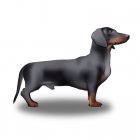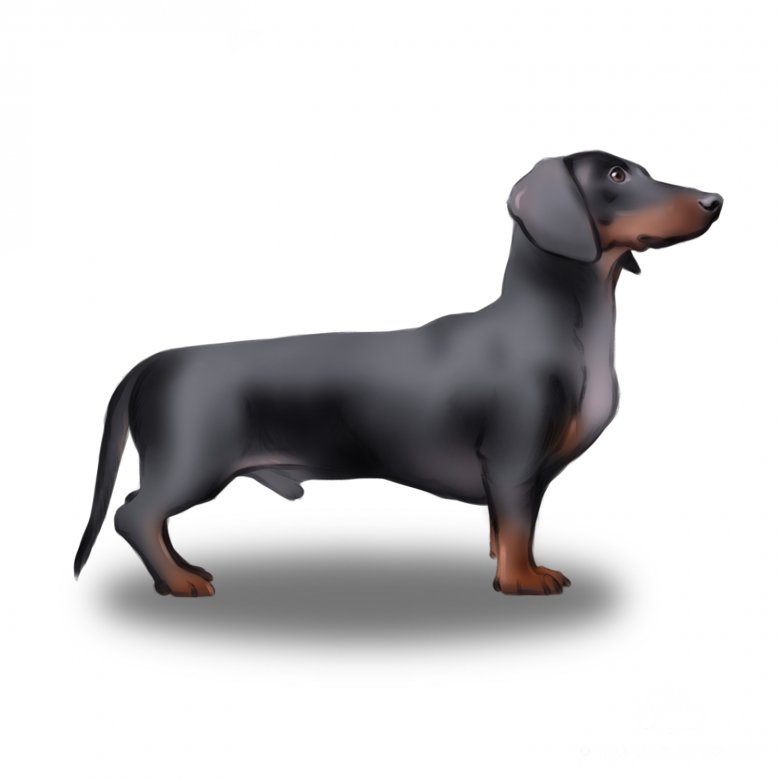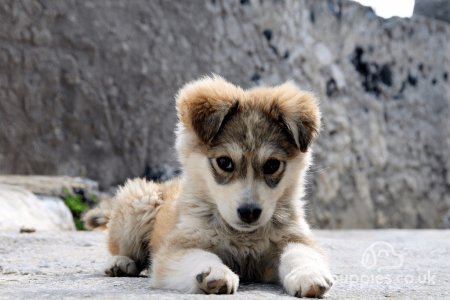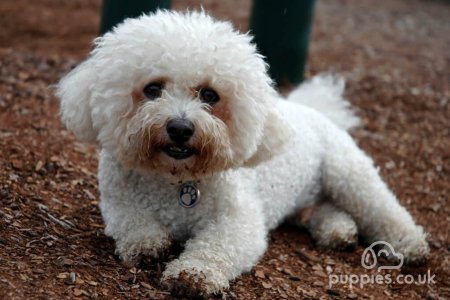Why Dachshunds (Smooth Haired) are Great
Originally bred in Germany to hunt badgers and other burrow-dwelling animals, the Dachshund has evolved into a much-loved family pet. Dachshunds, the smooth-haired variety in particular, boasts a sleek and shiny coat, adding to their distinctive appearance.
Charming and Unique Appearance: Smooth-haired Dachshunds are known for their short, glossy coats that come in a variety of beautiful colours and patterns.
Affectionate Companions: Dachshunds form strong bonds with their families and are known to be affectionate, offering plenty of love and loyalty to their owners.
Energetic and Playful: Despite their small stature, Dachshunds have a surprising amount of energy and enjoy playtime and outdoor activities.
Things to Consider when Buying Smooth Haired Dachshunds
Some downsides to the Smooth Haired Dachshund:
Grooming: While smooth-haired dachshunds require less grooming than their long-haired or wire-haired counterparts, they do shed and benefit from regular brushing to keep their coat healthy and manage shedding.
Health Concerns: Dachshunds are prone to certain genetic health issues, such as intervertebral disc disease (IVDD) due to their elongated spine. Regular health checks and DNA testing can help manage and anticipate these issues. It's advisable to look into the health screening results of their parents.
Exercise Needs: Despite their small size, dachshunds are energetic dogs that require regular physical exercise to keep them healthy and prevent obesity. Daily walks and playtime are essential.
History of the Dachshund (Smooth Haired)
The smooth-haired variety of Dachshund features a short, glossy coat, which developed from selective breeding to create a dog that required minimal grooming and was protected against various climate conditions. This variety remains popular due to its classic appearance and the ease of upkeep compared to the longer-haired varieties.
The breed likely descends from the Saint Hubert Hound, and its classification varies by region: it falls under the hound group in the United States and Great Britain, but countries in the Fédération Cynologique Internationale recognise Dachshunds as having their own unique group.
Appearance
How big is the Dachshund (Smooth Haired)?
The Dachshund, often known as the sausage dog, is a small to medium-sized breed. They possess a compact, long-bodied stature with a relatively low height. Typically, Dachshunds stand around 20-23 cm tall at the shoulder, with a length from the chest to the base of the tail around 40-50 cm.
How heavy is a Dachshund (Smooth Haired)?
The weight of a smooth-haired Dachshund varies with its size class. Standard-sized Dachshunds usually weigh between 7-15 kilograms. Miniature Dachshunds, however, are lighter, generally weighing up to 5 kg.
What colour is the Dachshund (Smooth Haired)?
Smooth-haired Dachshunds boast a diverse array of colours and patterns. The most prevalent colours include red, cream, and a tan pattern (black and tan, chocolate and tan, blue and tan, or isabella and tan). Additionally, patterns such as dapple (merle), sable, brindle, and piebald can appear across these base colours.
Temperament
Do Dachshunds (Smooth Haired) make good guard dogs?
Dachshunds are naturally alert and will bark at unfamiliar visitors, making them decent watchdogs. However, due to their small size and amiable disposition, they may not be the most intimidating security presence.
Do Dachshunds (Smooth Haired) bark a lot?
Yes, Dachshunds are known to be vocal dogs and may bark more frequently than some other breeds, which can be attributed to their watchdog instincts.
Are Dachshunds (Smooth Haired) easy to train?
Smooth-haired Dachshunds are intelligent, but they have an independent streak and can often be stubborn, making training a bit of a challenge. Consistent and patient training with positive reinforcement is essential.
Health
How long do Dachshunds (Smooth Haired) live?
Dachshunds generally have a life expectancy of around 12-16 years. This relatively long lifespan can be attributed to careful breeding and good care practices.
How much exercise does a Dachshund need?
Dachshunds are lively and energetic dogs that require regular exercise to keep them healthy and happy. They should have about 30 minutes to 1 hour of exercise each day.
Average Costs for a Dachshund (Smooth Haired) Puppy or Dog
How much does it cost to keep a Dachshund (Smooth Haired)?
As a rough guide in pricing:
Cost to buy: The cost of a Dachshund (Smooth Haired) can vary significantly. Prices range roughly from £500 to £3,000 depending on factors like breeder, location, and whether the puppy has undergone health testing.
Other costs (Vet, Food, etc.): Owning a Dachshund involves recurring costs such as food, vet check-ups, and grooming. These costs typically amount to about £70-£120 per month.
Specific Buying Guide for Dachshund (Smooth Haired)
You can read our general buying guide here, with the most important thing being going to view your Dachshund (Smooth Haired) puppy, seeing it with its mother, and checking the quality of the breeder.
Other Reading, Adopting Dachshund (Smooth Haired) Puppies and Rescue Organisations
A big thank you to the following sources who helped to shape this article:


















